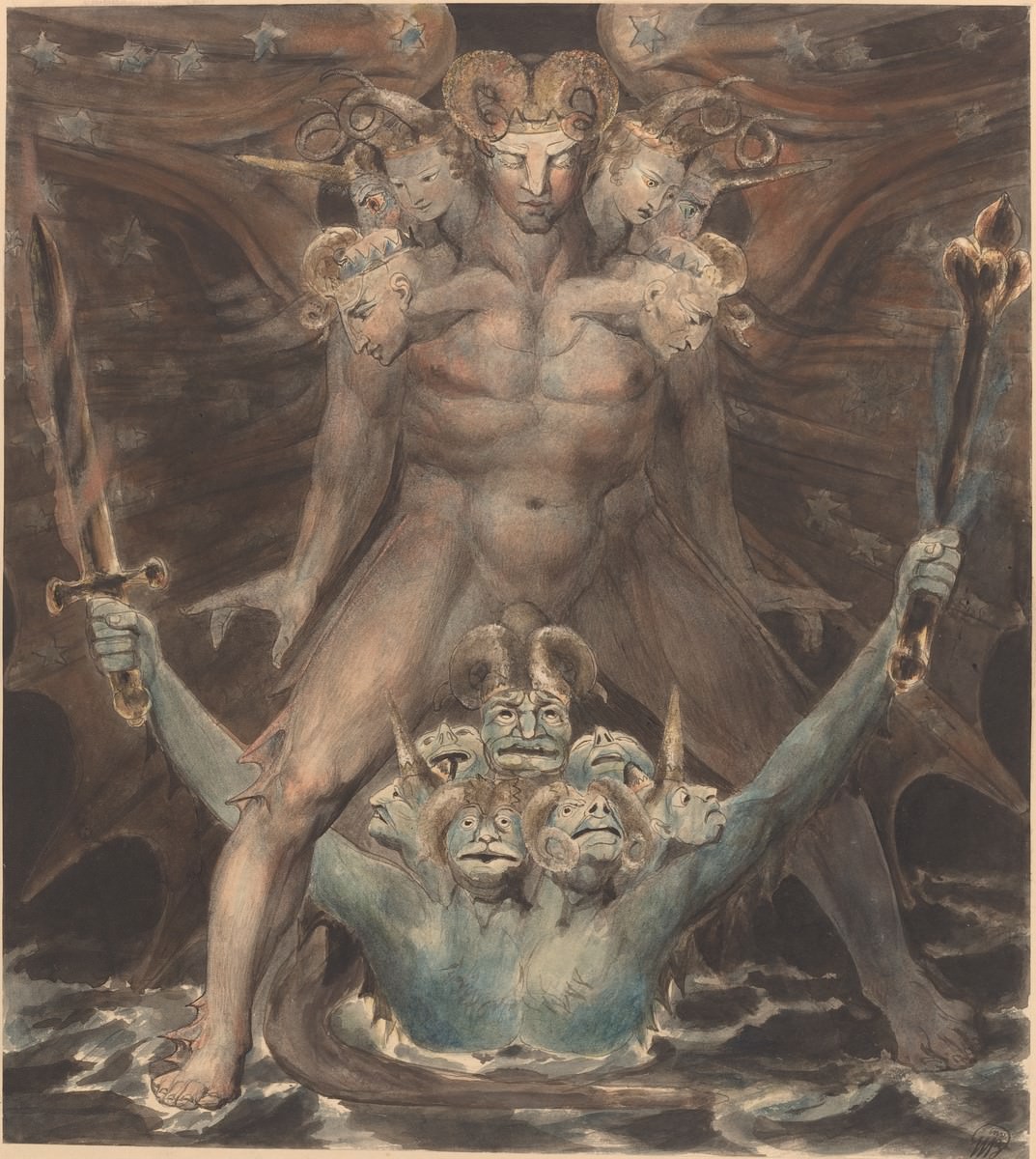
“Pain is a way to wake up (…) Do you feel your strength with the experience of pain (…) it is a feeling – your feelings are part of you (…) (excerpt from an interview with James Lizze – 1969).
The The Doors is one of the most popular bands in the history of Rock & Roll. It was formed in 1965, in California (USA) and it became especially marked by the singer and poet Jim Morrison figure, whose behavior was traced by excessive boldness and certain singularities, besides the great abuse in the intake of alcohol and drugs.
Morrison, as well as conducting the voice of The Doors, also had affinities with other arts besides music. After an intensive period of reading during adolescence, in 1964 He joined UCLA and there studied film and theater, with great names to as, for example, Francis Ford Copolla. During his lifetime, had two books of poetry published (both in 1969), the first of which was divided into two volumes: “The Lords/Notes on Vision” and “The New Creatures”. The first work is basically Morrison's impressions and reflections about numerous aspects that were part of his daily life., as people, places or even cinema. The second, It has lines built with more excitement and loads more poetic structures harmonic. Later, both titles have been compiled in one volume called "The Lords and The New Creatures" and after the musician's death, other poetry books were released under organization of his friend Frank Lisciandro and musician girlfriend's parents. The first posthumous volume released was called "Wilderness" (1988) and the second was titled as "The American Night" (1990), both became huge commercial success.
In addition to the interest in artistic practice, the musician read many authors who inspired. Appreciated works of great names in literature, as Kafka, Rimbaud e Charles Baudelaire e William Blake. By the way, the name of the band, “The Doors” (in Portuguese, "the doors") which refers to the "doors of perception" was chosen by Morrison based on a poem written by Blake, who once, wrote: “When the doors of perception open, everything appears to man as it really is: Infinity”. Another feature that certainly was part of the Jim Morrison knowledge charge, It was philosophy, area with which possessed high affinity. in biographies, commonly it is said that the musician used to read works of Nietzsche, E Camus Sartre. Among these philosophers mentioned, Morrison seemed to nourish a special interest in Nietzsche, whose thought was one of his great inspirations and, apparently, the leader of The Doors tried to practice in your life some elements proposed in the works of the German philosopher, as we shall see below.
In general aspects, both with regard to behavior that had both in his private daily, as in the art scene, Jim the attitudes were extravagant, disturbing and, in a way, intriguing. The musician put freedom as one of the essential points of their artistic productions, encouraging the public to also be free - to the extreme, whatever each understood as "freedom". We can not know whether the lead singer of The Doors was aware (full or in part) that his savagery could bring problems, but Jim seemed to embrace the consequences of their antics with a certain serenity. Abuse of narcotics was an attitude that was part of their daily lives because the artist liked new experiences, to dwell in the fullness of his life. There is a letter (“Unhappy Girl”) it seems well demonstrate this way the musician faced life:
(…)
"Sad girl
Rip your network
Smash all your grids
Melt your cell Today
You were sentenced to prison
You yourself created
(…)
Do not miss your chance
Swimming in mystery
You're dying in prison
You yourself created”. - Free Translation.
the letter, We see the exposure of what Jim wanted through his art: encourage freedom, demolishing paradigms. Grades these, the cells that many people create (or in which the insert) and that we ourselves can break. The human being is free to choose, to take different paths and makes. However, often it does under external influences, not pure and honest way, I would not like. That's when they arise the cells that trap.

We obscenities boxes, teasers to the audience, challenge the authorities and, any time, say what was in his mind, were some of the acts that Jim materialized, more than, as any action generates reaction. Jim Morrison, once, self-entitulou-like “king orgasmic”, codenamed appropriate considering that in many of its shows, musician employed a stroke behavior by a shameless sensuality. By the way, It was precisely the excessive sexual apologies that practically committed his career, because in one of several presentations of the band, the consequences of this type of extrapolating were serious. As quoted by The Miami News (1969): “Now his days are numbered, and the way to secure it is fully open” (…) simulated act of masturbation and opened his fly in a degrading spectacle that prevailed foul language and profanity (…). The social consequences generated by this fact were immense. Jim Morrison made headlines of the most important media of the time. A few days after this show, the captain of the Miami Police Security Division placed an order for arrest for musician. Added to this, in the same period, Mike Levesque, a young Catholic, with President Nixon's support, He initiated a movement called "Crusade For Decency", one of whose targets was the lead singer of The Doors. Morrison defended. He believed that his music consisted essentially in a cathartic experience and that sexual apologies were one of the many components of this musical purpose: “The music is very erotic. One of its functions is to cathartic purging of emotions. Call our orgasmic music is the same as saying that we are able to get people to a kind of emotional orgasm, through letters and sound“. (Interview with Danny Sugerman). Let us remember that Morrison had studied theater and film and, apparently, these areas reflected their behavior on the stage. The performance was crucial for the musician. She had to be neat and any element could be part of this process: “Sex is just a part of my performance. There are thousands of other factors. It is certainly important, but I do not think that is the main thing. Course is one of the natural bases of music. It can not be separated“. (Entrevista Mike Grant, Rave, 1968).
Jim's habits, very likely, in parts, had its inspiration in the thought of one of the greatest philosophers who ever lived, and that he was very fond: Friedrich Nietzsche. For the German thinker, art translates into an antagonist in which there aspect Apollinian, as opposed to the Dionysian. The philosopher defines as the two forms of the aesthetic world: “The man of a philosophical spirit even have the feeling that, behind this reality in which we exist and live is hidden a second quite different and that, therefore, the first also is only an appearance (…)” (NIETZSCHE, p. 46, 2013). This other plan was what Morrison craved achieve through its hypnotic art: the new plan, the unknown, irregular, the inordinate, the hidden. These are the "doors of perception"- as Morrison once declared himself: "There are known, there is the unknown and between them there is a door ". Still thinking within the aesthetic concept of Nietzsche, is noticed that the match between the force ratio (Apollonian) and the power of delusion (Dionysian), the latter of which is the affirmation of life, acceptance of the instincts, and that shapes the profile of the individual who embraces life in its fullness, loving with all that it offers, whether good or bad things. This latter force would be the way of life that Morrison represented through its extravagant and delusional behavior, and through its lyrics and melodies, They aimed to take listeners beyond themselves, intoxicates-the, freeing them from the moral limits and lead them to a state of life in which there is no compunction.
Dionisio is the figure which symbolizes delirium. Dionisio figure representing mythological drunkenness. Son of Zeus and Semele princess and the symbol of chaos, insane, is the unexpected. It is that which is opposed to the rational, the linear, the conceptual, the balanced. Through the effects of drunkenness, the unconscious objects manifest themselves and can express. It is the pure intuition, the power of ecstasy that opposes the intellect and balance of the Apollonian. Jim Morrison, through their behavioral habits, toasted ecstasy and perhaps more often lived in the unconscious level than the conscious. Jim was essentially Dionysian: acted with freedom, It gave, shamelessly to their feelings, guided by the emotion. Morrison embraced lived with his most insane side. And they Dionysian behavior, him though, I had a sense, because the singer believed his role as lead singer in a rock band was very grand and was beyond just singing. In an interview, He made the following statement: “I think in the activity of the artist or the shaman as a exhaust channel. People project their fantasies about it and they become real“. (are James, 1969). Morrison, rightly sought ecstasy obtained through the rhythm of the songs from his band.
Sign up to receive Event News
and the Universe of Arts first!
Once, in an article entitled “Apathy By Demon”, Mike Gershman asked: “But what is behind this demon who allegedly corrupted the youth of Miami?”. He himself answered on the following lines of this same text: “He (Jim Morrison) people caught a mythical dimension – as a shaman, sex symbol, poet and philosopher”. (magazine Rock, 1968). It pays people, anyway, through its potent aura dionysiac.
References:
- MARSICANO, Alberto. Jim Morrison: by himself. São Paulo: Martin Claret, 2005.
- NIETZSCHE, Friedrich. The Birth of Tragedy. São Paulo: Editora Escala, 2013.
- Sugerman, Danny; HOPKINS, Jerry. Jim Morrison: Nobody Sai live here. São Paulo: new Century, 2013.
JULIANA VANNUCCHI
Sorocaba – São Paulo
Instagram | Website Fanzine Brasil


Li this matter of Jim Morrison, and how he acted, it was liberal, as I said: so Dionysian.
I thought the band's name was inspired by the book The Doors of Perception by Aldous Huxley.